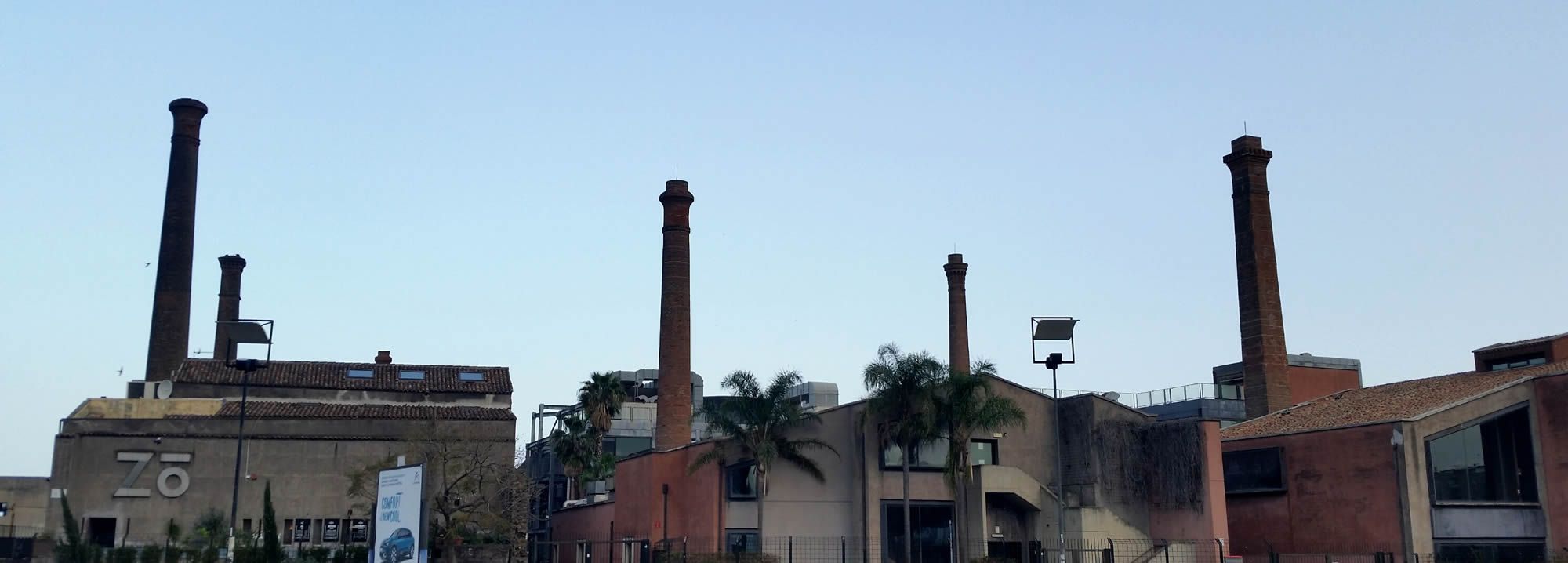
The mysterious chimneys of Catania
Upon leaving Catania Central Station one cannot help but notice that northwards stand an array of red brick chimneys. If you head that way, along Viale Africa, you will discover that they form a complex which today houses museum, exhibition spaces and an evening venue called ”Zo” – what, you may wonder, are these a remnant of?
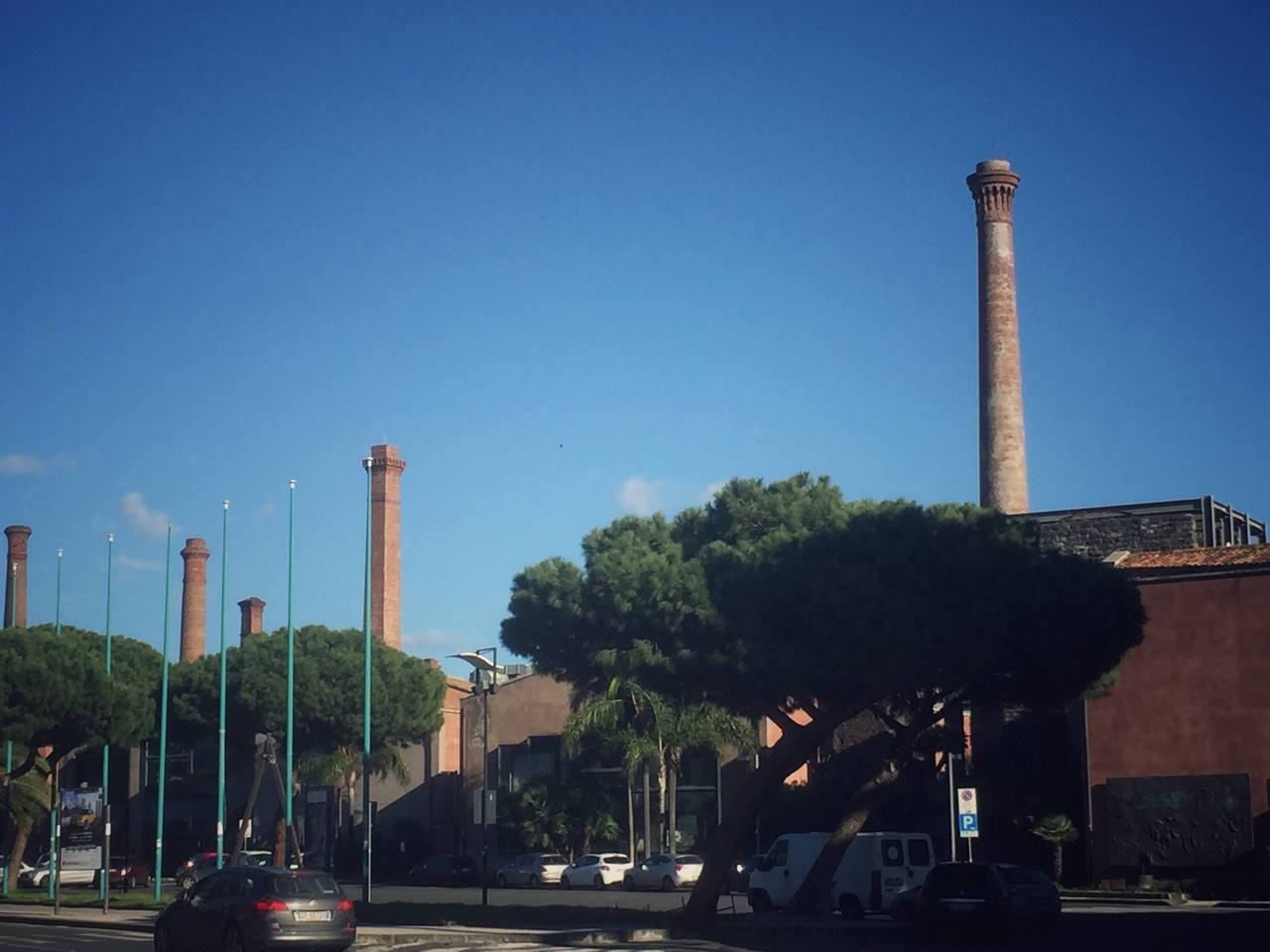
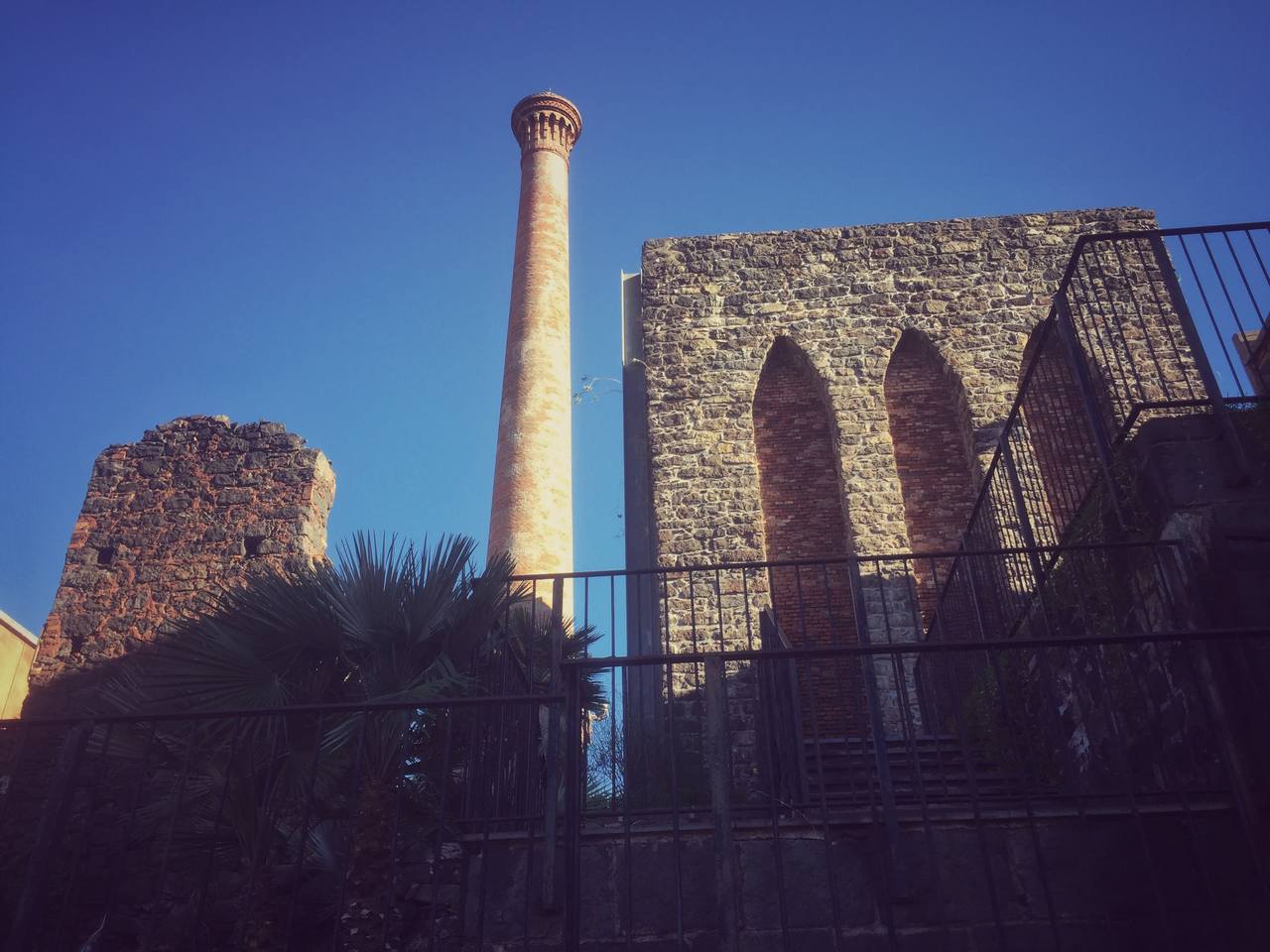
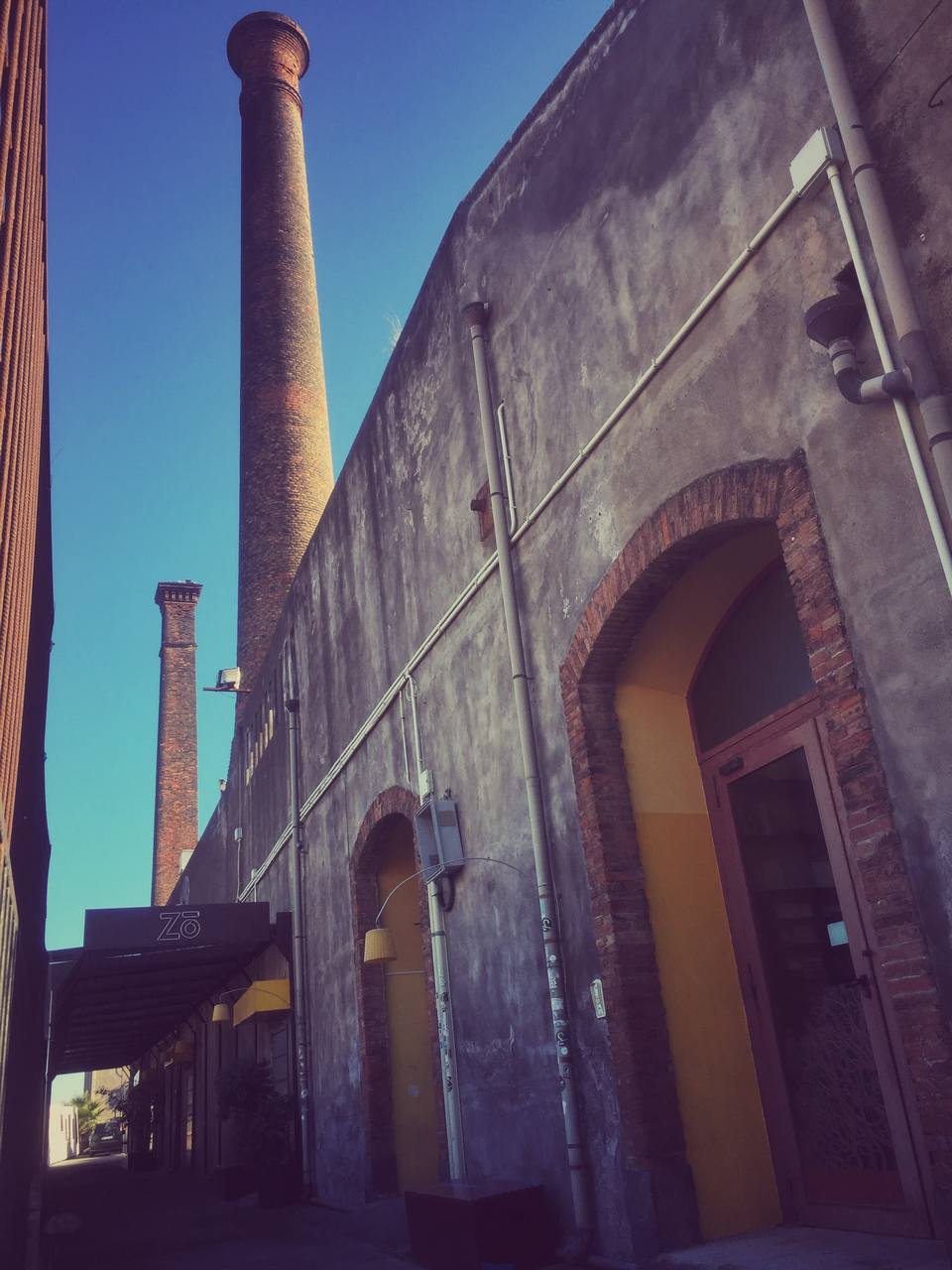

During the late-Eighteenth Century, well into the Nineteenth and beyond, Sicily capitalised on one resource it had in abundance – Sulphur.
Sulphur had been used for centuries, as an ingredient for elixirs, as a prerequisite in the alchemical pursuit of the philosopher’s stone, even as a decorative element of wooden furniture. The nascent industrial revolution brought with it new uses for sulphur. The explosion in demand for gunpowder (sorry, pun intended) as the great empires of Western Europe sought to expand, and came into conflict, suddenly made Sicily, with its abundance of this material, the premier exporter of the period enriching the island’s economy significantly.
Nearby mines in Caltanisetta, and other locations, transported their sulphur to Catania for processing in an area covering tens of hectares of the coastline north of the port. This area is the only example of a real industrial zone in the south of Italy.Great buildings built from lava stone and brick contained furnaces the exhaust from which was funneled up the chimneys. The mid-Nineteenth Century was the golden age in which Anglo-Sicilian business ventures invested heavily in the sulphur refineries. Milling, storage and processing plants were all built to host the industry and to meet the soaring demand.
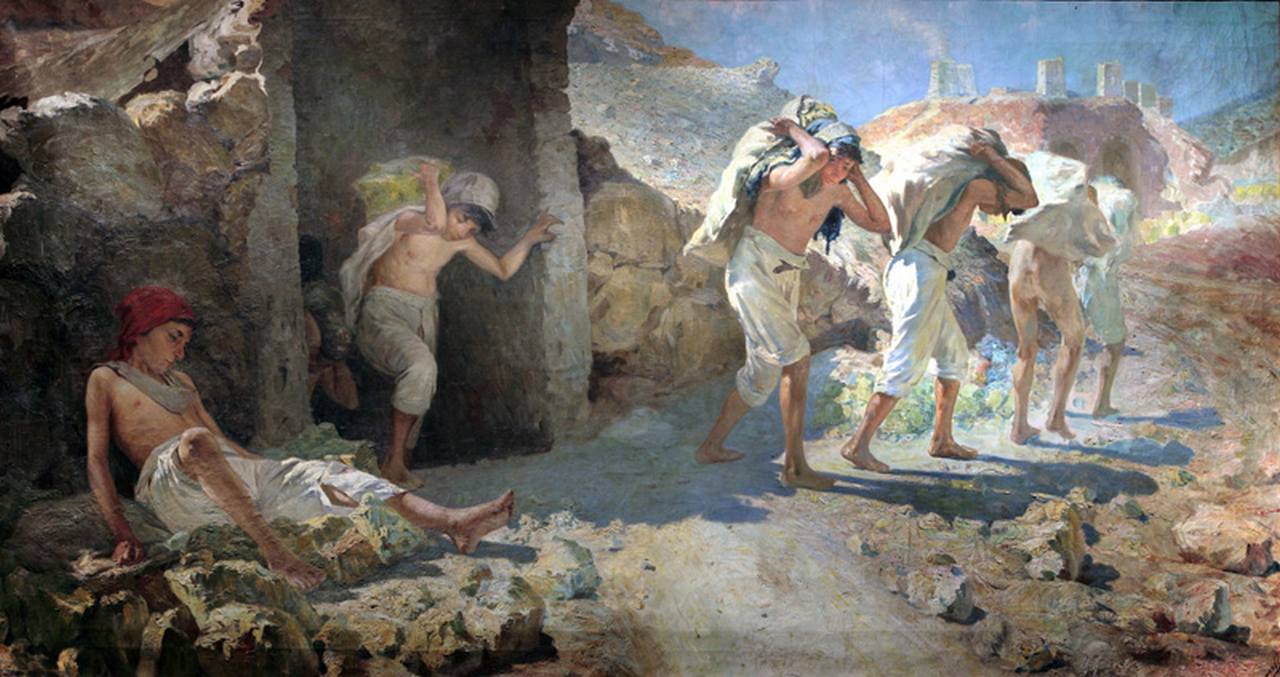 “Golden age” it may have been for some, but for others less fortunate, the sulphur mines were a symbol of brutal working conditions. Children as young as six were sent into the narrow confines of the mines to carry the extracted sulphur to the surface. Temperatures below ground reached around 45 C, explosions, mine collapses and other hazards rendered the life of a miner – young or old – insufferable. The younger of these children were referred to as “Carusi”. “The Carusi” painting below, by Orlando Tomaselli, in 1905 clearly gives voice to the terrible treatment of the workers in sulphur production locally.
“Golden age” it may have been for some, but for others less fortunate, the sulphur mines were a symbol of brutal working conditions. Children as young as six were sent into the narrow confines of the mines to carry the extracted sulphur to the surface. Temperatures below ground reached around 45 C, explosions, mine collapses and other hazards rendered the life of a miner – young or old – insufferable. The younger of these children were referred to as “Carusi”. “The Carusi” painting below, by Orlando Tomaselli, in 1905 clearly gives voice to the terrible treatment of the workers in sulphur production locally.
The sulphur mines were given the literary treatment by Giovanni Verga, in a short story called “The Evil Redhead” (available in translation in “The She-Wolf & Other Stories”)
Recommended Works in translation
We will look in more detail at Giovanni Verga, born in Catania, in another blog post, but for now know that he is considered a pioneer of realism, and a great writer of the late 19th Century and early 20th Century.
Commercial activity ceased after the conclusion of the Second World War. Having dominated the market for more than a century, cheaper to exploit deposits of sulphur were found in the United States causing a collapse in demand for Sicilian sulphur. In fact, compared to the Nineteenth Century, production dropped from 90% of world supply to just 2%. and so the chimneys fell into disrepair.
In 1984 the Regional Authority of Catania engaged architects to restore a number of the chimneys, incorporating them into a project aimed at revitalising the city.
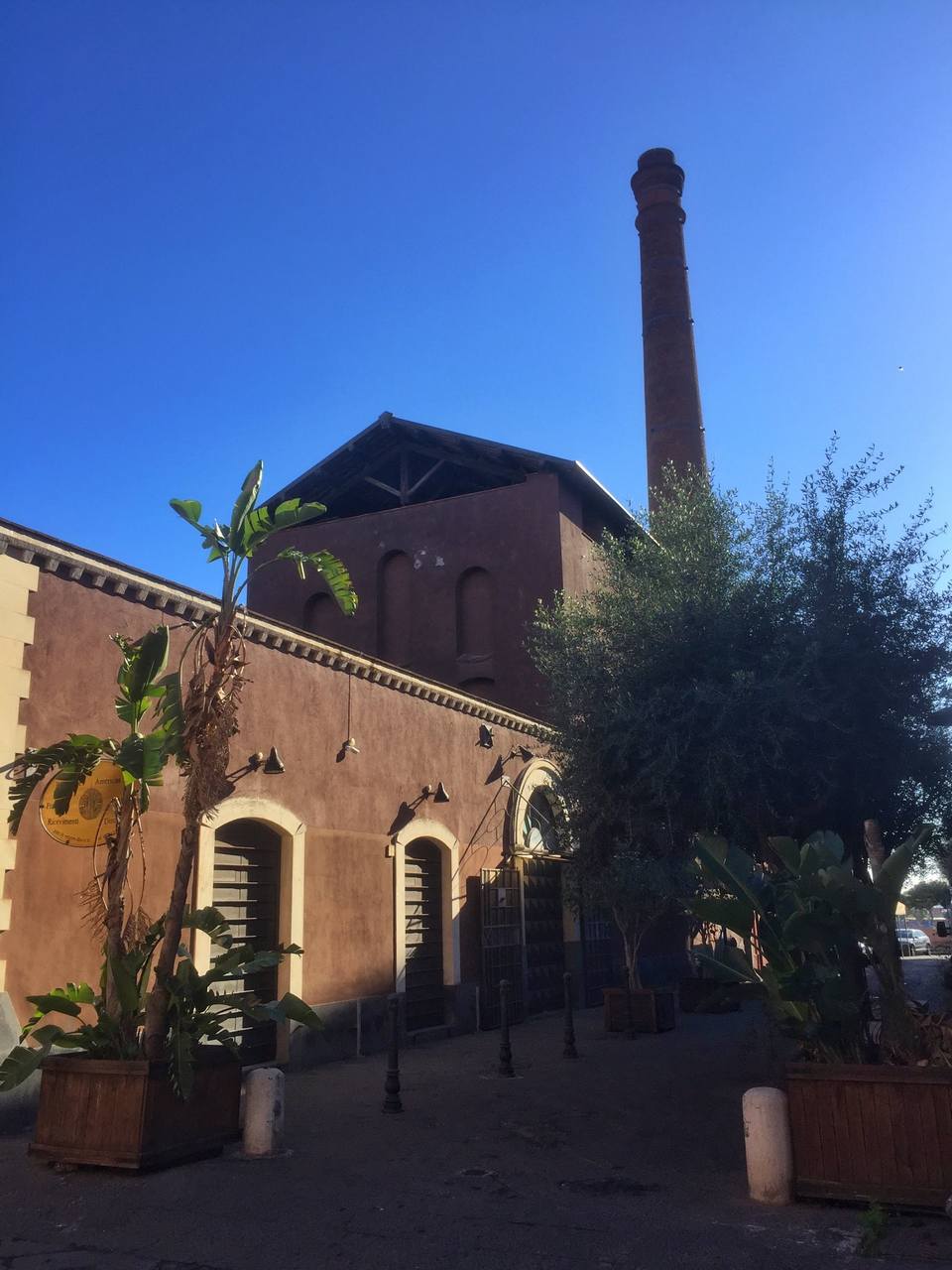
The project sought to maintain the basic structures, in particular the chimneys that could be saved. From these was born an exhibition centre of some 25 000 square metres. The centre today is used for trade fairs, conferences, concerts, theatrical performances, film viewings and exhibitions. Inside the complex one can find a museum of film, another commemorating the Allied landings on Sicily in 1943, an exhibition of ancient maps of Sicily and a collection of vintage radios.
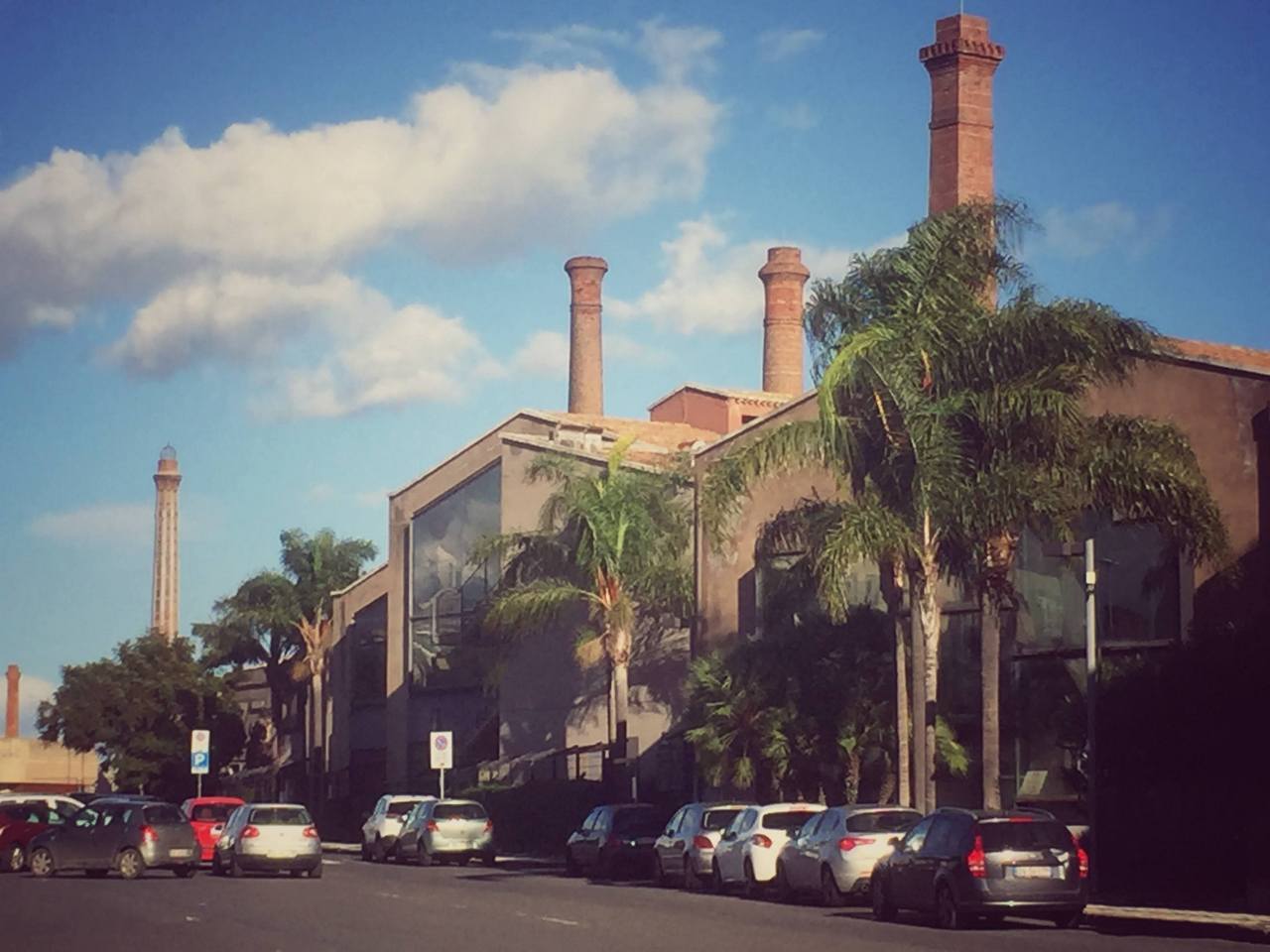
Aside from these permanent displays, one can find temporary exhibitions such as the increasingly famous Etna Comics annual event.
Further Information (Please consult the respective websites for up to date entry times.)
Museo dello Sbarco 1943 – the museum allows entry on the hour and on the half hour, to facilitate guided tours. They feature interactive, and multimedia exhibits, as well as contemporary photographs, artefacts and information relating to the 1943 Allied invasion of Sicily which was used to inform tactics on D-Day in the following year.
To learn more about this extraordinary period there are a number of excellent books examining the invasion including The Allied Invasion of Sicily: The History of the Largest Amphibious Campaign of World War II, by Charles River editors.
...and Sicily '43: The First Assault on Fortress Europe, by James Holland.
Hours: (Confirm on site: www.cittametropolitana.ct.it)
10am-6pm, last entry 4pm Tue-Sun Jul & Aug
9am-5pm Tue-Sun, last entry 3pm Sep-Jun
Museo del Cinema - for non Italian speakers the primary interest here lies in the film posters, memorabilia and vintage cinematographic equipment on display. The tour is illuminating if you speak Italian. You do not have to take the tour to go in.
Hours: (Confirm on site: www.cittametropolitana.ct.it)
10am-5pm Tue-Sun Jul & Aug
9am-4pm Tue-Sun Sep-Jun
Antique Sicilian map exhibition: More than 150 maps from as far back as the Fourteenth Century, organised into categories such as nautical, religious themed and so on.
Hours: (Confirm on site: www.cittametropolitana.ct.it)
Tuesday to Saturday from 9.00 to 17.00 (last entrance at 16.30)
Vintage Radio Exhibition:
Hours: (Confirm on site www.cannizzaroct.org)
Tuesday to Saturday from 9.00 to 17.00 (last entrance at 16.30)
Closed on Monday and Sunday